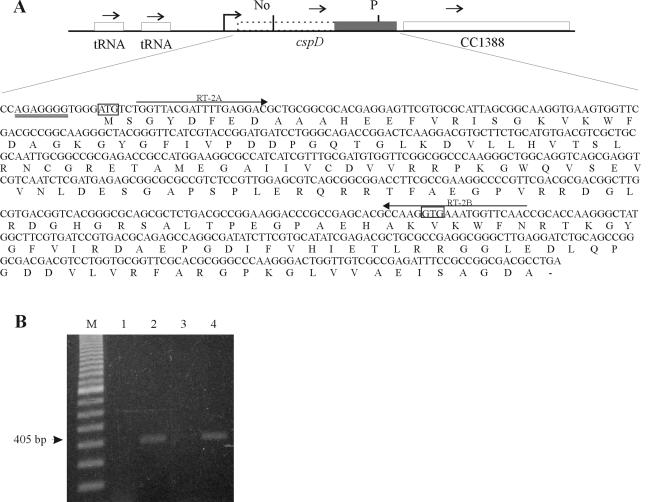FIG. 2.
Determination of the existence of a longer cspD transcript. (A) The scheme indicates the region of the cspD gene, showing the new proposed coding region (dotted lines), and the originally annotated coding region (dark box). Below is shown the sequence of the proposed cspD coding region, indicating the position of the two primers used in the RT-PCR (arrows). The new (ATG) and annotated (GTG) start sites are boxed. Ribosomal binding site is double underlined. (B) RNA was isolated from mid-log phase cells (lanes 1 and 2) and from cells at 24 h after entry into stationary phase (lanes 3 and 4) and treated with DNase I previous to the experiment. RT-PCR was performed with a pair of oligonucleotides—one that hybridizes close to the ATG of the proposed longer cspD ORF and one at the beginning of the annotated cspD coding region. Control reactions, carried out with Taq DNA polymerase but without reverse transcriptase, yielded no amplified bands (lanes 1 and 3), confirming that there is no contamination of DNA in the samples. The expected 405-nt fragment obtained for both samples is indicated by an arrow.

